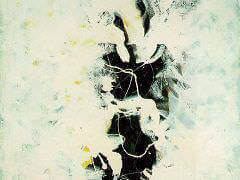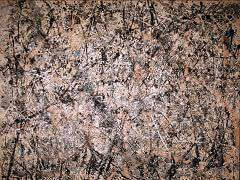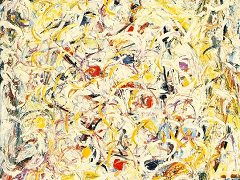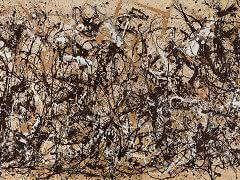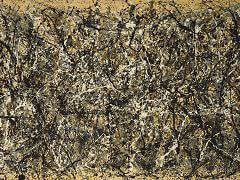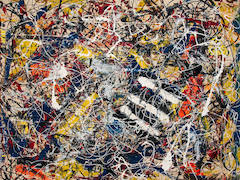Number 12, 1944 by Jackson Pollock

The Second World War brought about a major change of fortune for many American artists. The occupation of Paris - art capital of the world - had forced the emigration of a whole host of European modern artists, many of whom like Piet Mondrian, Marc Chagall, settled in the United States, With the post-war European art market largely in tatters, attention was increasingly focused upon new artistic developments in New York.
In many respects, Jockson Pollock was the first American artist to gain a truly global reputation. In 1947, Pollock began to develop his famous 'drip' technique, by laying the canvas on the ground and dripping paint directly on to the surface, frequently using a stick. The resulting paintings, often simply titled with numbers, were non-figurative, had no conventional compositional structure, and were regarded as entirely expressive of the artist's individual gestures. Pollocks style was soon dubbed Abstract Expressionism and, over the next few years, many American painters developed their own unique form of Abstract Expressionist art. For some critics, this style was seen as quintessentially American, reflecting what they saw as the true liberation of American art from its former dependence upon Europe.



